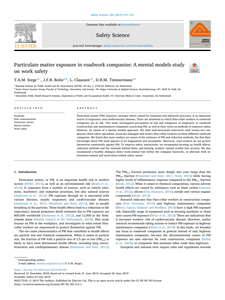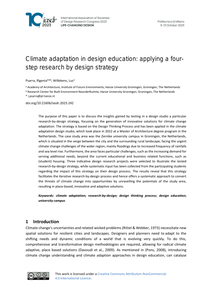Various tools for safety performance measurement have been introduced in order to fulfil the need for safety monitoring in organisations, which is tightly related to their overall performance and achievement of their business goals. Such tools include accident rates, benchmarking, safety culture and climate assessments, cost-effectiveness studies, etc. The current work reviews the most representative methods for safety performance evaluation that have been suggested and applied by a variety of organisations, safety authorities and agencies. This paper discusses several viewpoints of the applicability, feasibility and appropriateness of such tools, based on the viewpoints of managers and safety experts involved in a relevant research that was conducted in a large aviation organisation. The extensive literature cited, the discussion topics, along with the conclusions and recommendations derived, might be considered by any organisation that seeks a realistic safety performance assessment and establishment of effective measurement tools.
DOCUMENT

"In high security forensic institutions, patients are sometimes placed on smallscale wards to be treated individually if their psychiatric condition and behaviour do not allow for them to live and interact more freely with other patients. On these so-called individual wards, there is little contact between patients and more security measures are in place, such as higher numbers of staff members per patient than on group wards. The present study investigated the experienced safety of staff members (n = 41) and patients (n = 21) of such individual wards, compared to staff members (n = 55) and patients (n = 55) of group wards with the Essen-CES. The mean item score on the scale experienced safety of the Essen-CES for the entire sample was 2.1 (SD = .9) with a range from 0 to 4 and higher scores reflecting a higher experienced safety. Staff on individual wards had a significantly lower experienced safety than patients on both ward types and staff on group wards. It is advised, therefore, to implement additional measures to support professionals who work on these individual wards. "
DOCUMENT
Climate change is now considered more than just an environmental issue, with far-reaching effects for society at large. While the exact implications of climate change for policing practice are still unknown, over the past two decades criminologists have anticipated that climate change will have a number of effects that will result in compromised safety and security. This article is informed by the outcome of a co-creation workshop with 16 practitioners and scholars of diverse backgrounds based in The Netherlands, who sought to conceptualize and systematize the existing knowledge on how climate change will most likely impact the professional practice of the Dutch (or any other) police. These challenges, with varying degrees of intensity, are observable at three main levels: the societal, organizational, and individual level. These levels cannot be separated neatly in practice but we use them as a structuring device, and to illustrate how dynamics on one level impact the others. This article aims to establish the precepts necessary to consider when exploring the intersection between climate change and policing. We conclude that much still needs to be done to ensure that the implications of climate change and the subject of policing are better aligned, and that climate change is recognized as an immediate challenge experienced on the ground and not treated as a distant, intangible phenomenon with possible future impacts. This starts with creating awareness about the possible ways in which it is already impacting the functioning of policing organizations, as well as their longer-term repercussions.
MULTIFILE

Particulate matter (PM) exposure, amongst others caused by emissions and industrial processes, is an important source of respiratory and cardiovascular diseases. There are situations in which blue-collar workers in roadwork companies are at risk. This study investigated perceptions of risk and mitigation of employees in roadwork (construction and maintenance) companies concerning PM, as well as their views on methods to empower safety behavior, by means of a mental models approach. We held semi-structured interviews with twenty-two employees (three safety specialists, seven site managers and twelve blue-collar workers) in three different roadwork companies. We found that most workers are aware of the existence of PM and reduction methods, but that their knowledge about PM itself appears to be fragmented and incomplete. Moreover, road workers do not protect themselves consistently against PM. To improve safety instructions, we recommend focusing on health effects, reduction methods and the rationale behind them, and keeping workers’ mental models into account. We also recommend a healthy dialogue about work-related risk within the company hierarchy, to alleviate both information-related and motivation-related safety issues. https://doi.org/10.1016/j.ssci.2019.06.043 LinkedIn: https://www.linkedin.com/in/john-bolte-0856134/
DOCUMENT

Sustainable Open Solutions Climate Waterfront is an interdisciplinary project that aims to explore waterfronts in Europe facing extreme situations under the threat of climate change, eg. heat, too much absent rain and sea level rise with all its consequences. The central goal is to exchange adaptive strategies for sustainable solutions for infrastructure and urban planning. The multidisciplinary perspective in cooperation with all possible partners, stakeholders and citizens, leads to a better understanding of the challenges and adaptation strategies.The participating parties are six coastal cities: Lisbon, Rome, Thessaloniki, Gdansk, Stockholm and the Amsterdam region. All these cities, except ‘Amsterdam’, are represented by a university. The Amsterdam area is represented by a multidisciplinary, educated but not necessarily academically employed delegation.
DOCUMENT

The climate crisis is an urgent and complex global challenge, requiring transformative action from diverse stakeholders, including governments, civil society, and grassroots movements. Conventional top-down approaches to climate governance have proven insufficient (e.g. UNFCCC, COP events), necessitating a shift towards more inclusive and polycentric models that incorporate the perspectives and needs of diverse communities (Bliznetskaya, 2023; Dorsch & Flachsland, 2017). The independent, multidisciplinary approach of citizen-led activist groups can provide new insights and redefine challenges and opportunities for climate governance and regulation. Despite their important role in developing effective climate action, these citizen-led groups often face significant barriers to decision-making participation, including structural, practical, and legal challenges (Berry et al., 2019; Colli, 2021; Marquardt et al., 2022; Tayler & Schulte, 2019).
DOCUMENT

Effects of climate change in cities are evident and are expected to increase in the future, demanding adaptation. In order to share knowledge, raise awareness, and build capacity on climate adaptation, the first concept of a “ClimateCafé” has been utilized since 2012 in 25 events all over the world. In 8 years ClimateCafé grew into a field education concept involving different fields of science and practice for capacity building in climate change adaptation. This chapter describes the need, method, and results of ClimateCafés and provides tools for organizing a ClimateCafé in a context-specific case. Early ClimateCafés in the Philippines are compared with the ClimateCafé in Peru to elucidate the development of this movement, in which one of the participants of ClimateCafé Philippines 2016 became the co-organizer of ClimateCafé Peru in 2019. The described progress of ClimateCafés provides detailed information on the dynamic methodological aspects, holding different workshops. The workshops aim at generating context-specific data on climate adaptation by using tools and innovative data collection techniques addressing deep uncertainties that come with climate change adaptation. Results of the workshops show that context-specific, relevant, multidisciplinary data can be gathered in a short period of time with limited resources, which promotes the generation of ideas that can be used by local stakeholders in their local context. A ClimateCafé therefore stimulates accelerated climate action and support for adaptation solutions, from the international and the local, from the public and private sector, to ensure we learn from each other and work together for a climate resilient future. The methodology of ClimateCafé is still maturing and the evaluation of the ClimateCafés over time leads to improvements which are applied during upcoming ClimateCafés, giving a clear direction for further development of this methodology for knowledge exchange, capacity building, and bridging the gap between disciplines within climate adaptation.
DOCUMENT

The general aim of this research project has been to examine this phenomenon of tourism flow switching and consider the factors driving the geopolitical instability that can compromise destination security. On a more practical level the research has also examined what the reactions of Dutch tourists are to security threats affecting their tourism decisions and looked at the development of preventive measures against attacks by destinations and travel organisations. Finally, the research on the regional geopolitics of the MENA and European areas have together with the attitudes of Dutch tourists towards destination security been used as inputs into a scenario planning process involving the steering group of tour operators who originally commissioned this research, as participants. This process has focussed on macro environmental analysis, identification of key uncertainties, and the development of resilient strategies for the future.
DOCUMENT

The changing climate has an effect on the quality of life in our cities: heavier rainfall (resulting infloodings), longer periods of drought, reduced air and water quality and increasing temperatures incities (heat stress). Awareness about these changes among various stakeholders is of greatimportance. Every Dutch region is required to perform a stresstest indicating the effects of climatechange (o.a. flooding and heatstress) before 2020. The level of execution, area size and level ofparticipation of stakeholders, has intentionally been made flexible.To provide more insight into the approaches and best management practices to climate resilience,this article provides 3 examples of stresstests performed on several levels: single object real estatelevel, city level and national district level. The method ‘stresstestíng’, involves flood and heatstressmodeling, defines the current status of climate adaptation characteristics of an object, city or district.The stresstest form the base line and starting point for the national 3 step approach adaptationstrategy ‘analyse, ambition and action’.The 3 pilots have been evaluated as ‘successful’ by stakeholders and yielded a significant amount ofvaluable information, further improvement is recommended as increasing the participation of theprivate sector, in a ‘quadruple helix approach’. The learning points from these 3 examples ofstresstests will subsequently be implemented in the form of improved stresstesting in the nearfuture in (inter)national cities around the world.
DOCUMENT

The purpose of this paper is to discuss the insights gained by testing in a design studio a particular research-by-design strategy, focusing on the generation of innovative solutions for climate change adaptation. The strategy is based on the Design Thinking Process and has been applied in the climate adaptation design studio, which took place in 2022 at a Master of Architecture degree program in the Netherlands. The case study area was the Zernike university campus in Groningen, the Netherlands, which is situated in the verge between the city and the surrounding rural landscape, facing the urgent climate change challenges of the wider region, mainly floodings due to increased frequency of rainfalls and sea level rise. Furthermore, the area faces particular challenges, such as the increasing demand for serving additional needs, beyond the current educational and business related functions, such as (student) housing. Three indicative design research projects were selected to illustrate the tested research-by-design strategy, while systematic input has been collected from the participating students regarding the impact of this strategy on their design process. The results reveal that this strategy facilitates the iterative research-by-design process and hence offers a systematic approach to convert the threats of climate change into opportunities by unravelling the potentials of the study area, resulting in place-based, innovative and adaptive solutions.
DOCUMENT
